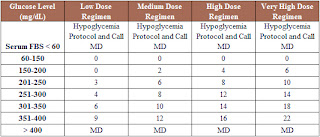For my last blog of this semester, I will be analyzing a research article that contains a common theme with my other blogs - Diabetes. My article, "14-Year Diabetes Incidence: The Role of Socioeconomic Status", caught my attention for two reasons. First of all, it is relevant to the material I have learned in my Kinesiology 140 class. A large gap in socioeconomic status results in an overall lower heath status of the overall population; individuals with lower incomes have a higher chance of obtaining diabetes and other health implications. Secondly, it also provides insight to my own experience; this article allows me to depict whether my father's diabetic condition is related to socioeconomic status.
The following information was obtained from the article, "14-Year Diabetes Incidence: The Role of Socioeconomic Status, composed by Ross, Nancy A; Gilmour, Heather; Dasgupta, Kaberi (2010).
Methods:
This study was conducted on 5,547 women and 6,786 men aged 18 or older, who did not have diabetes in 1994/1995. Subjects were followed to determine if household income and education level were associated with an increased risk of diagnosis or death from diabetes by the year of 2008/2009. The data used for this study was Statistic Canada's National Population Health Survey (NPHS). Excluding people on Indian Reserves, territories, Canadian Forces and some remote areas, the household component of the NPHS covers the population living in private houses in 10 provinces in 1994/1995.
Using the year 1994/1995 as a reference point, the researchers applied three models. Model 1 was adjusted for income, education and lengths between observations. Model 2 was adjusted for variables included in Model 1 and the addition of age. Lastly, Model 3 was adjusted for all the variables previously with the inclusion of cultural background, Body Mass Index (BMI), and number the number of secondary risky behaviour factors. Secondary risky behaviour factors include: heavy drinking, smoking and physical inactivity. For all these models, the researchers separated the data into three categories: income and education for men, for women, and for both sexes.
 |
| BMI Chart Retrieved from: http://www.spudart.org/blogs/randomthoughts_archives/A2007053 |
Results:
Among the people aged 18 and over who were free from diabetes in the 1994/1995 period, 877 people were diagnosed with diabetes by 2008/2009 and 23 (12 men, 11 women) of them died. Although men in this study were more likely than women to live in high income households and be postsecondary graduates, they were also more likely to be overweight/obese and report 2-3 incidents of secondary behaviour risk factors.
Discussion:
From this study, it shows that there is a consistent association between low income and incidents of diabetes when compared with the higher income individuals. Previous cross-sectional have also found an association between socioeconomic status and diabetes prevalence. Thus, this study adds onto previous studies and affirms a clear association between low-income and incident of diabetes. The take home message from this study is that individuals in the lower spectrum of society's socioeconomic status have a higher risk of being diagnosed with diabetes. A limitation to this study is that BMIs were based on reported height and weight. As a result, the calculations tend to yield lower estimates of obesity and could potentially underestimate the association between obesity and Type 2 Diabetes.
In conclusion, socioeconomic status is associated with diabetes. Further studies should be conducted to increase the amount of data available and to inform individuals of these statistics. It is essential for the public to be more aware of this topic and to help reduce inequities through various means.
References:
Ross, Nancy A; Gilmour, Heather; Dasgupta, Kaberi. (2010). 14-year diabetes incidence: The
role of socio-economic status. Health Reports, (21)3, 17-28. Retrieved from
http://search.proquest.com.proxy.lib.sfu.ca/docview/904161014?accountid=13800
